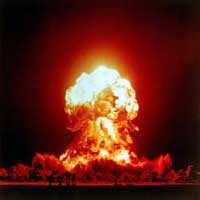Business Cycle The graph below shows the id
Post# of 18540

Business Cycle
The graph below shows the idealized business cycle and the intermarket relationships during a normal inflationary environment. This cycle map is based on one shown in the Intermarket Review by Martin J. Pring (www.pring.com). The business cycle is shown as a sine wave. The first three stages are part of an economic contraction (weakening, bottoming, strengthening). Stage 3 shows the economy in a contraction phase, but strengthening after a bottom. As the sine wave crosses the centerline, the economy moves from contraction to the three phases of economic expansion (strengthening, topping and weakening). Stage 6 shows the economy in an expansion phase, but weakening after a top.
Stage 1 shows the economy contracting and bonds turning up as interest rates decline. Economic weakness favors loose monetary policy and the lowering of interest rates, which is bullish for bonds.
Stage 2 marks a bottom in the economy and the stock market. Even though economic conditions have stopped deteriorating, the economy is still not at an expansion stage or actually growing. However, stocks anticipate an expansion phase by bottoming before the contraction period ends.
Stage 3 shows a vast improvement in economic conditions as the business cycle prepares to move into an expansion phase. Stocks have been rising and commodities now anticipate an expansion phase by turning up.
Stage 4 marks a period of full expansion. Both stocks and commodities are rising, but bonds turn lower because the expansion increases inflationary pressures. Interest rates start moving higher to combat inflationary pressures.
Stage 5 marks a peak in economic growth and the stock market. Even though the expansion continues, the economy grows at a slower pace because rising interest rates and rising commodity prices take their toll. Stocks anticipate a contraction phase by peaking before the expansion actually ends. Commodities remain strong and peak after stocks.
Stage 6 marks a deterioration in the economy as the business cycle prepares to move from an expansion phase to a contraction phase. Stocks have already been moving lower and commodities now turn lower in anticipation of decreased demand from the deteriorating economy.
Keep in mind that this is the ideal business cycle in an inflationary environment. Stocks and bonds advance together in stages 2 and 3. Similarly, both decline in stages 5 and 6. This would not be the case in a deflationary environment, when bonds and stocks would move in opposite directions.
 (0)
(0) (0)
(0)